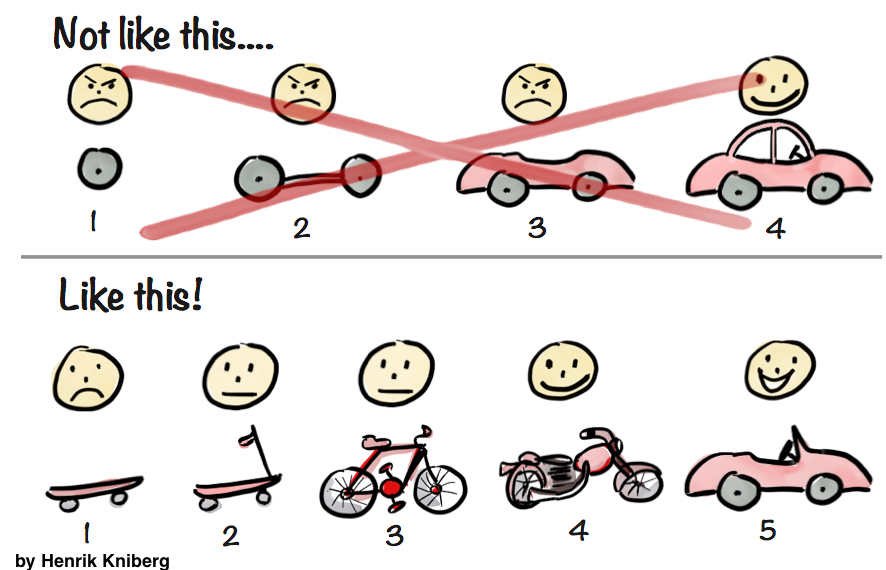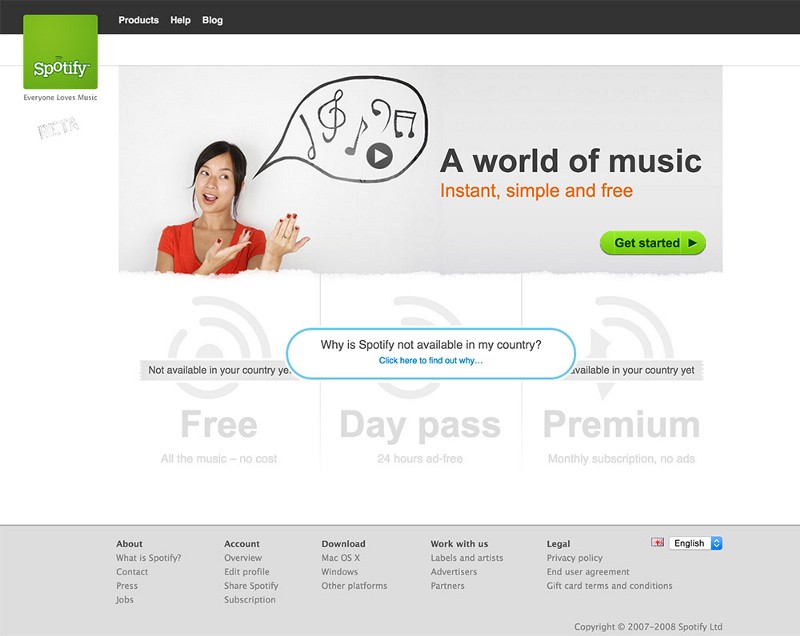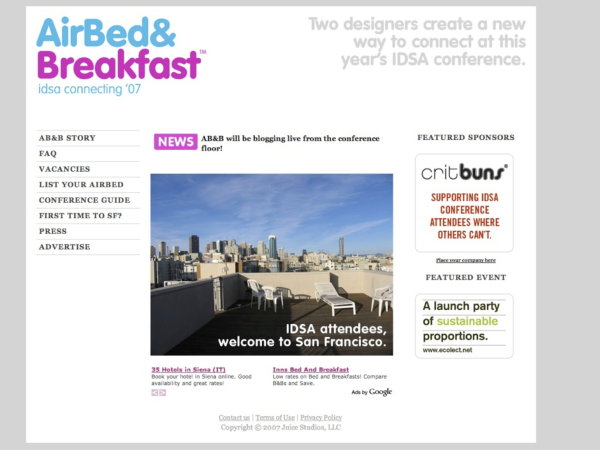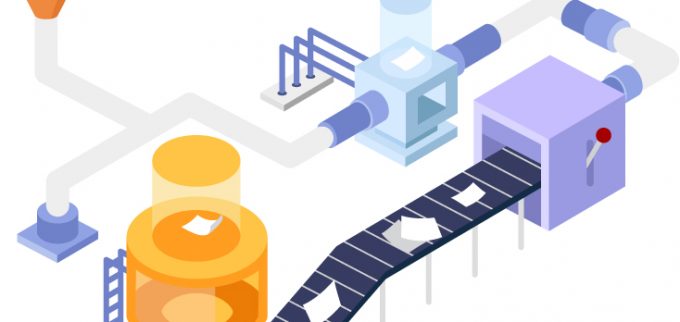Ninety percent of start-ups fail. And 92% of donut stores succeed.
Are those simply two random statistics? Never.
These seemingly unrelated industries are actually deeply intertwined. In fact, startups can learn a lot from donuts.
Have we lost you yet? Don’t worry, this will make sense soon.
In this article, we’ll show you the 5-step method startups can apply to reduce risk by creating strategic launch products — or minimum viable products. Also, see minimum viable product examples below.
But first, why do start-ups fail?
Here are the top 3 reasons:
- Bad product-market fit
- Poor business model
- Running out of cash
But they don’t have to fail if they’re smart.
There’s no silver-bullet to kill these reasons. But there’s a copper one if you accept that analogy.
Why do successful startups like Uber, Airbnb, Spotify, and more did land in the 10%? There’s definitely more to it, but a solid minimum viable product is a common denominator.
Before we get started — it’s a long post, so you can skip directly to any section here:
Ready? Let’s get to it.
What Is a Minimum Viable Product?
The term “minimum viable product” is heavily associated with lean startup methodology.
Written by Eric Ries, The Lean Startup dissects the approach to creating and managing startups in order to get a product into a customer’s hands faster.
Most startups jump right in and move forward with an idea of their product without a strong tailored management process.
They miss a crucial stage of their product development to determine if this product is even something their customers want. Yet, they move forward — and fail.
The Lean Startup approach encourages businesses to test their vision from a very early stage.
A minimum viable product, more commonly abbreviated as MVP, is a technique used when a new website or product is first being introduced.
It has the bare minimum features to satisfy its first-time users or customers. The product’s final features are implemented only after considering a good amount of feedback from its initial users.
In other words, an MVP is the most simplistic version of a product that can still be released. Yes, it is simple. But this can also be the most difficult (and most important) part of a product execution.
Why the Minimum Viable Product?
Every business starts from an idea, right?
In order to grow a successful business, that idea needs to effectively solve a problem. Most companies jump right in and create a product with a variety of features. But when it comes down to the nitty gritty details, their product doesn’t actually solve a problem.
So before things get complicated, start with the basics:
What problem does your product solve OR what problem will your product solve?
Some like to view an MVP as a child that you teach, nurture to grow, and develop into a mature adult.
UX Expert, Andreia Paralta Carqueija uses a doughnut analogy to differentiate MVPs. She uses a simple plain doughnut to symbolize an MVP, and “a doughnut full of chocolate, sprinkles, and all the goodness possible,” as a more developed iteration of your product.
The plain donut, or the glazed, is minimum viable product examples.
At a later stage, it may not even be a doughnut anymore. It could evolve into a waffle or even a pancake! Yum.
MVPs help you learn more about your product and gain customer feedback. The goal of an MVP is not to gain profit.
This won’t happen in the early stages of your plain doughnut or product. Your MVP is not something set in stone. It may evolve over time as you gain more insight throughout the process.
An MVP needs to execute whatever differentiates you from your competition really, really, really well.
The goal of an MVP is to reiterate. It’s a process. It’s agile.
Why Minimum Viable Products Fail

Your MVP’s failure rate is around 30 to 49% across most industries. In order to avoid the possibility of your MVP failing, there are a few important aspects to keep in mind.
First, you must make sure you have a problem worth solving. Most MVPs end up failing because they’re solving the wrong problem, solving a worthless problem, or there’s been poor customer communication.
In the graphic above, Illustrator Henrik Kniberg shares two different approaches to a basic MVP of what later becomes a car. Here, the problem that is being solved is transportation. In the top drawing, the first stage of the MVP is simply a wheel.
Now, does this solve the issue of transportation? Not so much. But in the bottom drawing, a person is able to travel somewhere on a skateboard. It may not be a full-fledged car just yet but it does solve the problem of transportation.
Most failed MVPs all have strong concepts, but it’s the implementation that is often flawed. The product focuses too much on what is to be done and not how it will be done.
In order for an MVP to be successful, it needs to have a balanced approach to both minimum features and product viability.
Minimum Viable Product Examples
To ensure you get the picture, how about we look at some successful MVP start-ups?
Some of the biggest startup names out there today got their start with a simple MVP.
Spotify
This Swedish music-streaming service launched in 2009 with a simple landing page and a single feature to stream music. As they evolved their desktop apps, they were able to test their market and tweak it along the way.
Now, they have over 20 million active users, 5 million paying subscribers and they are continually growing.
Airbnb
In 2007, founders Brian Chesky and Joe Gebbia wanted to start a business. Furthermore, they were confronted with the high rental prices of their San Francisco apartment.
They saw an opportunity when they noticed a design conference coming to town. The guys took photos of their apartment, uploaded them onto a simple web page, and opened their doors for the conference attendees.
They landed three paying customers and were able to gain insight and validation of the need for this product and thus AirBed & Breakfast was born.
Facebook
It wasn’t pretty. No news feed, no apps, no nothing. But, as we all know, it worked. And if you’ve seen The Social Network you know how it started.
Each of these businesses identified a problem they could solve, tested their market and their consumers with a simple product and as a result, they were able to grow their startup accordingly.
How to Build a Winning Minimum Viable Product

So, how do you do it?
Before you think about building a viable MVP, it’s important to decide if you need to follow the MVP method or not.
If you have an idea of a product but you aren’t sure if you can successfully develop and launch it, an MVP will help you reduce risk and find out early on if your idea will work.
When it comes to building a minimum viable product, keep in mind that it should be minimal. Keep things as simple as possible from the very beginning.
It doesn’t matter whether it’s a SaaS, an iPhone app or a website. Or a pastry.
As Ries explains, “It is much more minimum than you think.” Think non-glazed donut.
Here’s a minimum viable product template process.
Step 1: Identify What Problem You’re Solving and For Whom
Take a look at your business idea and ask yourself why you need this product and identify how it can help you. This will help you identify the main goal of your product and the solution to your potential customers’ needs.
Why would your customers use your product?
In what situation would they use it?
And who’s your target audience?
If you get stuck at this stage, try to identify your personal challenges. Is there anything you would be able to do better if you had the right tool?
Step 2: Take a Look at Your Competitors
Once you’ve identified the main goal of your product it’s time to conduct a competitor analysis to see what your competition looks like. A lot of startups don’t take this step into consideration. They simply move forward with their development simply because of their pure faith in their own product.
Take the time to look at your competitor’s websites and apps. Dive deeper and analyze their traffic, where is it coming from, demographics, and geographic location of their users.
Here are some great tools for gathering information on your competitors:
- Similar Web: One of the most popular competitor analysis tools. Not only is it free but all you need to do is copy and paste the link of the site and you can see how many unique visitors your competitors generate per month.
- Ahrefs: This tool is great for analyzing how strong your competitors’ backlink profile is against your own website in addition to a plethora of other tools including keywords, traffic, search volume, and more. Get a two-week free trial in their Lite and Standard versions.
- SEMRush: This SaaS provides you with analytics reports offer a detailed insight into your competitor’s strategies. Including display advertising, organic and paid search, link building, and keyword research. SEMrush offers monthly and annual plans with a 7-day money back guarantee for those testing the waters.
Step 3: Define Your User Flow
A user flow consists of a number of steps that need to be performed in order for a task to be completed. In order to define your user flow, you need to define process stages. Simply put, define the steps needed to reach your product’s primary goal.
Don’t get involved with your product’s features at this point. This will come later. Take a more basic approach to define your user flow.
What is the solution your user will have when they use your product?
Step 4: Analyse Your Features
Did you know that more than 60% of features built in software products are rarely or never used? Now that you’ve created your user flow, you can start creating a more detailed list of features for each particular stage.
Once you’ve laid out your features for each stage, you will need to prioritize them. What is the most important action you want your users to complete?
This will be your main feature. Think about each stage of your product and how a list of features might fit into each stage.
For example, let’s look at the primary goal of giving users the option to purchase a customised pair of shoes as Cayenne Apps did here.
Example:
Stage 1: Customise your shoe
Choose a color, shape, fabric, design/heel type, share your design with a friend, save your design for later, create multiple designs, etc.
Stage 2: Buy your shoe
Purchase with a credit card, PayPal, Apple Pay, discount coupon/code, and more.
Stage 3: Manage order
Add additional items to your order, cancel the order, share it with a friend, and so on.
Stage 4: Deliver order
Track your shipment, etc.
Now that all of your features are listed out, try to weed out the least important features. It might help to categorize your features from top to bottom by priority with, ‘must-haves,’ ‘nice-to-haves,’ and ‘don’t care.’
Once you’ve identified all of the must-have features for each stage, it’s time to define their scope for the first version of your product. During this stage, a lot of startups will begin creating a prototype.
Step 5: Build, Test, and Learn
Here is where you’ll move towards the development and testing stage of your product. Continuous testing helps you to improve the quality of the product before it’s been released.
This will also help you get ready for alpha or beta testing.
Once your product has reached its alpha stage you will want to release it to a small group of people or real users through your first rounds of beta testing.
Don’t be afraid to reach out to your friends and family for your first rounds of beta testing. Once you receive feedback from your beta testing, you may need to make additional changes or update versions of your product.
The testing stages of your product are crucial for you to understand what features your product lacks and what features your product can do without. Your users are the best people to define this.
From here, you can continue to improve your product by testing, learning from your consumers, building, testing and learning again.
How to Test Your Minimum Viable Product

In order for you to determine if your MVP is a product people are going to want and to pay for, it needs to pass certain tests. These types of tests will help you retrieve specific data to help you not only answer technical questions about your product but they will also help you determine if your MVP is viable.
Testing your MVP can range from AdWords campaigns to early prototypes and more.
If you’re not ready to create your prototype, you may want to consider using a smoke test. This is a common method to better understand and validate the use of your product before ever actually creating it.
You don’t have to invest any money and time into it. A smoke test can help you determine the interest and viability of your product.
4-Step Guide to Smoke Testing:
1. Set up a landing page for your product. Although no physical products have been made, a simple one-page website that introduces your product to your visitor asking them to sign up can help you gauge how much interest there is.
Use these as an opportunity to market your MVP’s features with an option for them to sign up if interested. You can use services like Instapage, Unbounce or Leadpages for landing pages.
2. Run an AdWords campaign. As Eric Ries explains, by running a PPC towards your landing page, “you will be able to determine the overall conversion % of customers from landing page to completed registration, the click-through-rate for your ads with different keywords, and the bounce rate.”
In addition to AdWords, be sure to have tracking in place to effectively measure KPIs. This will help you to understand where your visitors are coming from, what they’re doing on your page and what device they’re using.
3. Reiterate. Try out different landing pages to see how this affects your conversions. You may end up modifying your product or your test to see what works. If you’re getting great conversions, try adding a method of payment to see what happens.
4. Gather data. After doing your analysis and iterations, compile all the data you have and make a decision.
Below are few more ways you can test your MVP to gain valuable feedback and data:
A/B tests: A/B testings give you the ability to test two versions of a page, marketing design, or text and it determines which one is best for its performance. Google Analytics, Optimizely, Kissmetrics, and more are great tools for measuring conversions, bounce rates, and more.
Fundraising: You’d be surprised how much insight you can gain from fundraising through crowdfunding platforms. Crowdfunding websites are a great way to run MVP tests and gain enough data to see if your product is viable.
There’s a handful of useful websites out there like GoFundMe, Kickstarter, Indiegogo, and more that allow you to measure the market’s response to the interest and show of contributions to your project.
Demo videos: One of the most famous examples of a successful MVP is Dropbox. How did they validate their market and sell their MVP, you ask? With a simple 3-minute explainer video that demonstrated their functionality. Their sign ups increased from 5,000 users to 75,000 overnight, without even a real product.
Customer insight interviews: This is an important part of the building and testing your MVP. Use these discussions for more of an exploration rather than focusing on the functionality of your product.
Present your customer with the problems you plan for your product to solve and ask them what they think about each problem.You may be pleasantly surprised that one problem you’ve focused on is not the main focus from the customer’s perspective.
When it comes to testing your hypotheses, it will help to consider using multiple MVP testing techniques.
This will help you to figure out which one best first your business model and if you should move forward with it.
Conclusion
If there’s one takeaway point from creating a minimum viable product, it’s that you should keep things as simple as possible. Just look at the minimum viable product examples above. Remember to ask yourself…
What is the core value of your product?
Test, test, test. And test some more. That way, you’ll give yourself room to fail without overspending.